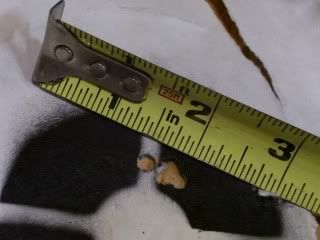I have a lathe now and want to make a PP Boolit mold for my 303-25. It has a 1-in-10 twist and accepts a long loaded j-word round. I would like to have as much boolit weight as possible but plan to design around the chamber and throat and take whatever the weight turns out to be.
So, where to begin?

|
   
   
|


|




 Reply With Quote
Reply With Quote











 The idea is not to buy anything. Making the bits is part of the fun. It's what 'blows my hair back'!
The idea is not to buy anything. Making the bits is part of the fun. It's what 'blows my hair back'!





